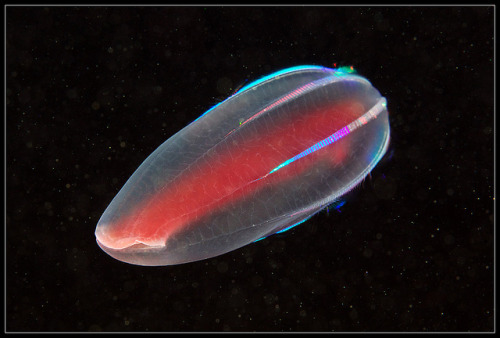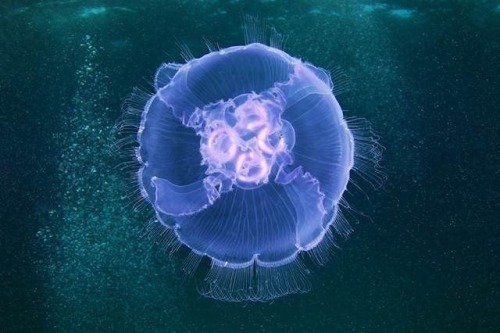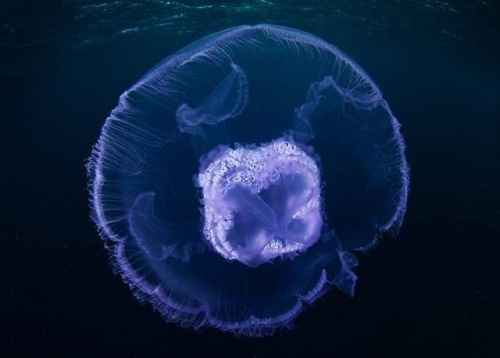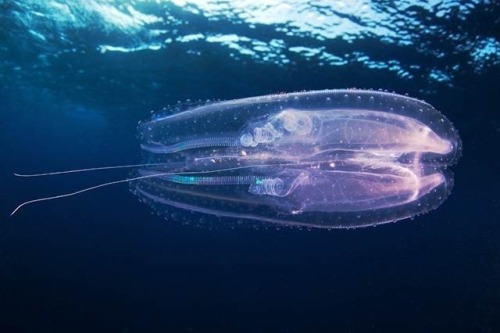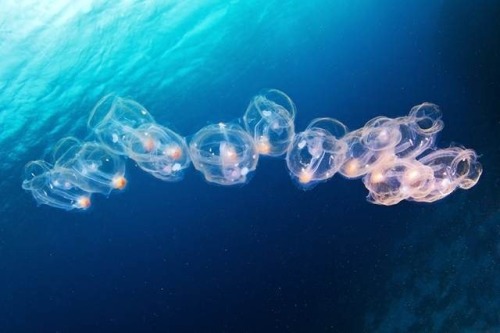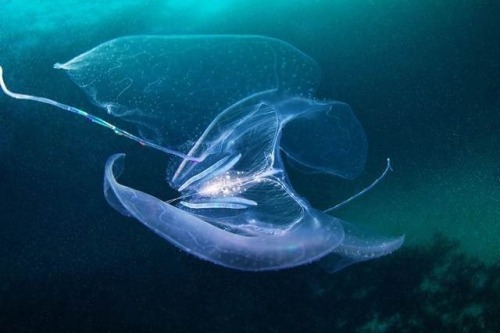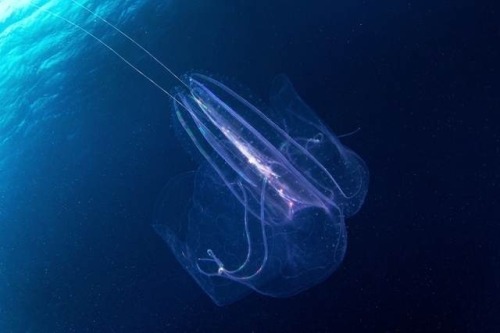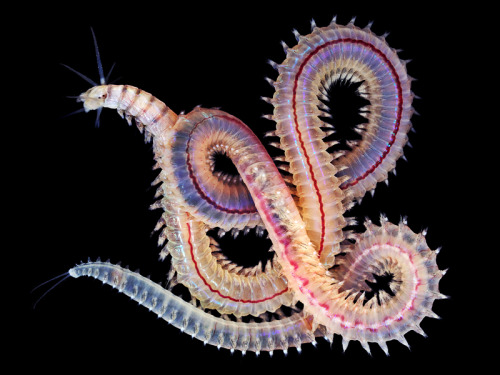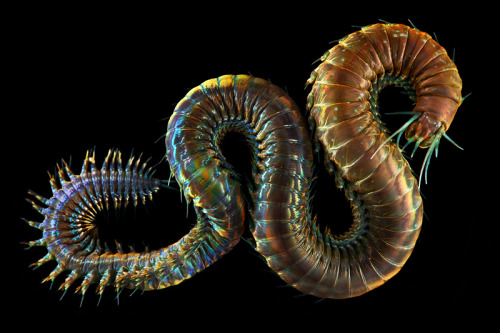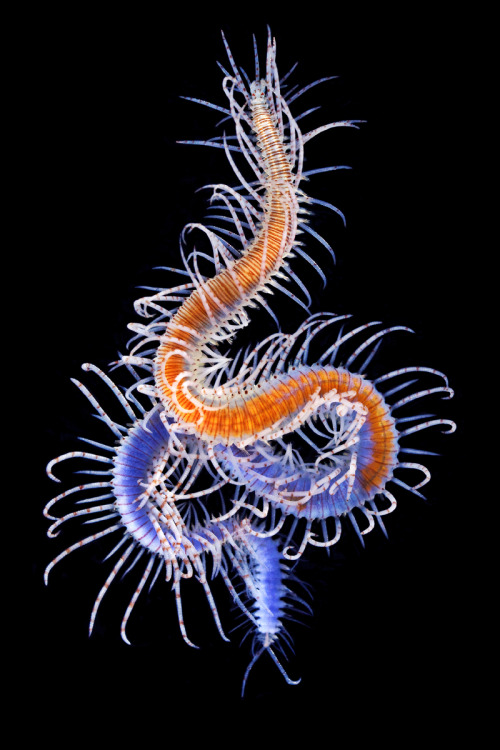#alexander semenov
PREDATORY CTENOPHORES (Beroe abyssicola) ©Alexander Semenov
Beroid ctenophores are a remarkable group that preys voraciously on other comb jellies. Unlike their cydippid relatives, Beroe lack tentacles throughout the life cycle. The body resembles a swimming sac, with a large forward directed mouth. Instead of sticky tentacles or large oral lobes, the cavernous mouth is used to engulf prey whole. Small Beroe use modified mouth cilia (the macrocilia) to bite off pieces of comb jelly prey; larger individuals also use the macrocilia to grab and swallow whole prey. Using the eight comb rows for propulsion, Beroe are relatively strong swimmers. They swim constantly in search of prey, which are encountered blindly. Following a heavy meal, the meridional digestive canals (lying just below the comb rows) are readily visible - those in Beroe abyssicola branch but do not connect, while those in Beroe forskalii form a network of connected branches.
Beroe abyssicola is more of a deep water species, where it has an attractive rose coloration. This coloration tends to be lost when it visits surface waters, but the distinctive dark color of the pharynx often remains. Like other comb jellies, these Beroe have bioluminescent areas of the body.
Fact Source:http://jellieszone.com/beroe.htm
Other Photos you may like:
Post link
Newly Discovered Deep Sea Worms Unknown to Science
Scientist and marine researcher Alexander Semenov, recently released a number of incredible new photographs of worms, several of which may be completely unknown to science.
Half of the photos were taken near the Great Barrier Reef in Australia during a 2-week conference on marine worms called polychaetes. Semenov photographed 222 different worm species which are now in the process of being studied and documented by scientists.
The other half of the photos were taken during Semenov’s normal course of work at the White Sea Biological Station in northern Russia where he’s head of the scientific divers team.
Post link

